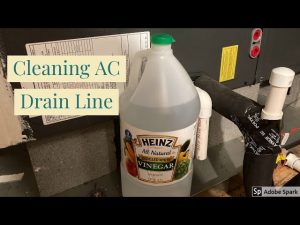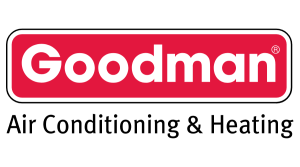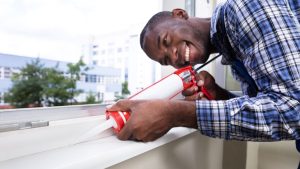Can I Just Put Vinegar in an HVAC P-Trap? A Complete Guide to Maintaining Your HVAC Drain Line
Do you wish to improve the service life of your HVAC system? If yes, then there are several maintenance activities that need to be done regularly throughout the year. One of the many that get ignored by all is cleaning the HVAC drain line and more appropriately the P-trap. As small as this piece of equipment is, it is more crucial than most people think and it can become clogged up over time, making leaks, water penetrations, and even shutdowns a possibility. Among the simple maintenance hacks that most HVAC operators recommend is pouring vinegar in the P-trap, but how safe is it and does it even work?
In this blog post, Summers Comfort Heating & Air also shares practical HVAC P-trap maintenance, why vinegar is used, and maintenance of the system as a whole unit.
What Is an HVAC P-Trap?
An HVAC P-trap is a part of the condensate drain line which plays a significant role in the removal of water from your air conditioner or furnace. While the HVAC system is running, there is always moisture in the air that is being removed and it (the moisture) has to relocate somewhere. That’s why the condensate drain line exists, which takes moisture out of the system and out of the house.
A short tube that carries the drainage water out of P trap and connects to the HVAC system and it’s designed to allow water to flow only in one direction is known as P-trap. Its functions include:
Prevention of Uninvited Odors & Gases: HVAC P-traps have water similar to sink traps that block bad odor, any sewer gas or mold spores from returning through the line back to the home.
Assistance with The Drainage: The trap complements the siphon action that enables condensate to smoothly flow out of the system.
The P trap does provide a wide variety of useful functions, nevertheless, over time, the P trap would also sometimes sustain some clogging which can lead to water backing up into HVAC which can lead to water leaking, rusting, inefficient performance, and water damage. Hence maintaining P traps is vital.
Why Vinegar?
Vinegar, as a cleanser of an HVAC P trap, is recommended for a variety of purposes. Vinegar is useful in maintaining an HVAC system because:
Easily Found: The majority of the time, vinegar is used in every houshold as it is an ingredient for preparing many delicacies.
Safe for Both HVAC System & Environment: Compared to some drain cleaner chemical substances, vinegar is safe to both the HVAC System as well as the environment.
Also contains Antibacterial & Antifungal: Vinegar is useful in eliminating algae, mold, bacteria that can lead to clogs in the drain line which subsequently renders the drain clear.
But while vinegar is an effective option, it is not the first and the only option, and there are a couple of thoughts to bear in mind so that you are using it the right way and in a safe manner.
Is It Safe to Just Pour Vinegar on the HVAC P-Trap?
Yes, it is, to pour vinegar into the HVAC p trap – which is a very easy method to maintain it. But before reaching for a vinegar bottle, it’s prudent to follow the following steps to gain quite a lot from it:
Step-wise Procedures to follow when Cleaning an HVAC P-Trap with Vinegar
Switch Off Your HVAC Unit: For safety, both at the thermostat and the breaker panel, switch off the HVAC unit prior to commencing the cleaning process.
Find the Condensate Drain Line and P-Trap: A drain line is generally a white PVC or plastic pipe found alongside the indoor HVAC unit (usually connected to a floor drain or external discharge pipe). It is the U-shaped curve of this plumbing line which is actually the P-trap.
Take Off the Cap of the P-Trap: On the upper side of some P-traps is found a plug or a cap to ease the access. Carefully pull out the cap in order to liberate the vinegar.
Pour in the Vinegar: About half to a cup of distilled white vinegar can be poured inside the P-trap. Vinegar is also great to unclog any clogs caused by bacteria and molds.
Allow the Vinegar to Sit: One has to remember that once vinegar is poured in the P-trap, it has to be kept for around 30 minutes so that any slime or algae and debris can be dissolved.
Flush with Water: After the sit time, the P-trap should be flushed with water so that any remaining debris can be cleaned. Warm water can be used but it is not necessary.
Replace the Cap and Turn On the HVAC System: Lastly, after having flushed the P-trap, replace the cap tightly, turn the HVAC system on and test the line for normal drainage.
How Often Should You Pour Vinegar in Your HVAC P-Trap?
One of the primary measures is to clean the condensate line to ensure that the areas do not get clogged. It is useful to pour some vinegar in the P-trap once a month when it is likely in use like the winter or summer months. Such maintenance practices shall assist tremendously in inhibiting mold and keeping the drain line free.
Is Vinegar The Only Way?
To put it another way vinegar works well but for those who are not favorable to the smell, there are non toxic alternatives to the cleaning of the HVAC P-trap:
- Bleach
Bleach is popularly known, and is used in cleaning deodorizing and disinfecting and could be used instead of vinegar due to the aforementioned properties. This must be noted, that bleach is often times more abrasive on the PVC pipe itself and it is also not eco-friendly. If you opt for bleach, combine half a cup of bleach with water and put it on a pinch AGM NOUN rather than once a month to avoid PVC pipes being affected.
Note: If you have copper pipes, do not bleach them because bleach can eventually eat away the copper.
- Hydrogen Peroxide
Hydrogen peroxide is another substance vinegar can be replaced with, and it works well with mold and mildew because these are organic materials, and hydrogen peroxide has a breaking ability. Mold is no friend to PVC pipes either, so it is safe for them and does not release toxic gas. A 3% solution of hydrogen peroxide should be poured into the P-trap of the sink, where you should leave it for 30 more minutes before washing it off with plenty of water.
- Commercial Condensate Drain Cleaners
There are also commercial cleaners specifically designed for HVAC condensate lines and diagnoses of either. These specialized cleaners are intended for tough caked-up clogs and therefore these could be helpful if a more in-depth cleaning procedure was required. However, they are pricier than vinegar or hydrogen peroxide normally, plus manufacturer instructions should be adhered to.
The Significance of P-Trap Maintenance on an HVAC System.
Your P-trap should be cleaned on a regular basis because doing so will avoid potential problems in the future through regular maintenance. Given this, maintaining your HVAC P-trap is of utmost significance for the following reasons:
- Eliminating Occurrence of Clogs and Backups
Water will begin leaking into your HVAC unit if the drain line for condensation becomes too clogged with buildup. Water leaks may lead to water damage, as well as contribute to mold development. This might be avoided by cleaning the P-trap on a regular basis to avoid such buildups in the first place.
- Preventing the Hibernation of Your Systems
Most modern-day HVAC units have float switches, which will automatically switch the system’s power off when it detects water in the drain pan – this is commonly caused by a P-trap blockage. Although this feature has been included to protect systems from damage, the system will also stop functioning until the problem has been fixed.
- Keeping the Indoor Environments free from contaminants
When the P-Trap is unable to drain efficiently, stagnant water that does not get blown away from the drain line turns into a breeding ground for mildew and mold. When this occurs, spores and unwanted odors can be released into the air within your house. When the interior of the building is cleaned on a regular basis, there are fewer chances of such contaminants, and therefore the conditions are better.
- Expanding Lifespan of the HVAC System
One of the aspects that can be troubling at times is the constant work that your HVAC System has to put in order to keep the environment of your home at a certain temperature which ranges from cool to warm. Carrying out routine maintenance on the condensate line as well as the P-trap will help you minimise the chances of breakdowns and scouring of your HVAC System thus maximising its lifespan and saving you on repair bills.
What are the Pressure Relief Valve Symptoms Relating to HVAC P-Trap Clogs?
If you have not been looking after your p trap, there are various warning signs that you may start seeing and will let you know that the component has to be addressed immediately.
Water Leaks or Puddles: Drained water from an indoor unit which is surrounded by puddles more than necessary means that the drain line is probably malnourished.
Foul Odors: This does not pertain too much to the system itself, but an odd smell or a gross stench close to the HVAC handles could mean there is some form of mildew or perhaps mold going on within the drain line.
The system stops: None of the parts are supposed to be active all the time, let alone a system that works on multiple mechanisms. If your system becomes inactive and goes off randomly, odds are that the floater switch is clogged and has had a case of a clog line.
If condensation cannot be done properly by the HVAC unit, humidity levels will have no means of being controlled and thus moist subtropical sensitivity will be present indoors when the HVAC unit struggles to eliminate condensation.
If these problems happen to you, try your utmost to look for the p trap. If you’re looking for guidance and the slow law is a burden that still hampers you, seek the assistance of an HVAC professional.
Final Thoughts: The Importance of Routine Maintenance
To keep your condensate drains clear, pour a little vinegar through the P-trap of your HVAC as a vinegar is a great cheaper option for the particles that will build up. Simply put, while it is not a substitute for expert maintenance, it is a good measure of general care that prevents clogging and increases performance.
If you adopt such a maintenance routine and look for clogs before they develop fully, it can mean the difference between losing your air conditioning in the stifling summer heat or having to pay substantial amounts for repairs.
When to Contact Specialists
In this case, however, simple caring is not always enough, although vinegar is effective against minor issues. If you’re having continual issues with clogs, leaky pipes, or anything similar that goes beyond regular consumers, call Summers Comfort Heating & Air. With years of experience, the clogs can be eliminated, a full inspection, and then all systems can be tested.
The HVAC system will only work well if simple maintenance checks are regularly done. In case you have issues with your P-trap and other HVAC-affiliated one, just reach out to us so we can allow you to enjoy your home in comfort all year round.




